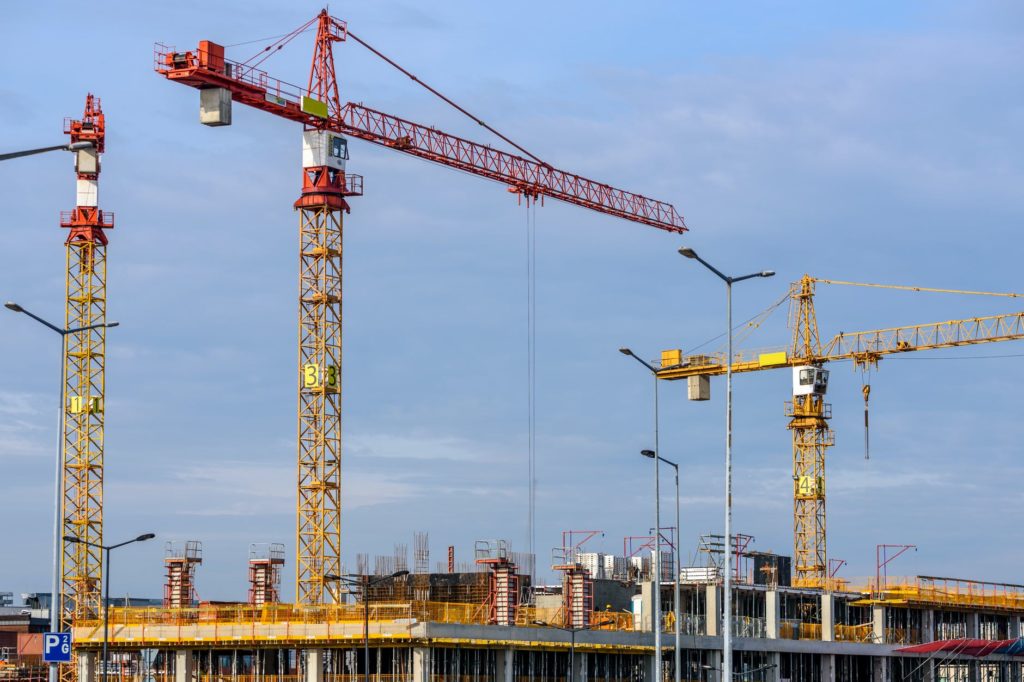Artificial intelligence and robotics play a vital role in construction projects, streamlining site work and improving project visibility. Developers are leveraging cutting-edge solutions in hardware and software innovations to drive greater workflow efficiencies. Robotics solutions allow for automated site inspection, progress management, remote monitoring, and safety checking.
Artificial intelligence in construction has completely revolutionised data analytics and site image processing, among other key areas. In fact, the complete adoption of AI has the power to grow project share of profit by 71% by 2035. The process efficiencies increased productivity, and enhancement in the growth outlook incentivises several developers to initiate their digital transformation journey through AI.
Understanding the critical role that these innovations play in enhancing construction operations, companies are increasingly developing robust solutions in robotics, drones, 3D mapping, AI, IoT, etc. A key trend within the technology domain is the integration of multiple technology solutions to solve complex problems. E.g., construction equipment health is being monitored through IoT M2M solutions, while the data is being analysed in real-time through the power of AI and cloud.
Let us explore the critical applications of robotics and AI in the construction domain.
Key role of robotics in site optimisation
Robotics solutions within critical domains, such as site inspection, are vital to ensuring compliance and adherence to quality. Ensuring worker safety, effective materials handling, and reviewing potential hazards is vital to avoiding unforeseen challenges and delays. Remotely dispatched robots are equipped with advanced 3D-image capturing and processing capabilities to provide a close-up view of all projects within one dashboard.
In fact, robotics in construction is widely considered to be essential to maintaining a high standard of project delivery and improved visibility. Virtual control room enabled robots are being dispatched on larger construction sites to inspect materials, ensuring that they are delivered as per agreed specifications and parameters.
Companies that leverage robotics solutions, such as Zepth360, can benefit from a truly connected construction ecosystem for their enterprises.
Robots are also being dispatched to support daily site inspections, providing greater visibility for site managers in tougher site terrain. With the help of drones and robots, site managers can ensure compliance to project guidelines to avoid expensive reworks or redevelopment. Live video conferencing can be facilitated with automated remote viewing of sites through robotics solution for agile resolution.
Autonomous robotic equipment is also helping streamline construction work, as they can be run continuously without requiring human intervention. They can help automate many of the resource-intensive stages during the construction project, thereby introducing true scalability across longer project cycles. Automated equipment also helps in structuring workflows with computerised pathways, predefined schedules, and predictive maintenance. It also helps prevent rework and error-prone practices through retrofitting and completely redesigned autonomous tech.
Leveraging AI for comprehensive data insights
AI plays a vital role in the forecasting domain, enabling deep data insight derivation for procurement processes. By analysing larger volumes of materials data, equipment costs, framework expenses, and indirect costs, AI is allowing for more accurate forecasting during the project planning stage. AI is also helping managers have more information during the estimation of project budgets, streamlining subsequent execution stages and enabling long-term cost control. 60% of construction firms are also planning to use AI-based real-time modelling for more accurate predictions of risk and returns.
AI is also being used for performing predictive maintenance on equipment, especially when used in conjunction with IoT sensors and data analytics solutions. Automated analysis and scheduling of preventative maintenance is saving cost and ensuring workability for stage-wise site work. This is also directly enhancing the durability of the site equipment, ensuring optimal asset utility. With close to 75% of engineering and construction firms increasing digital transformation budgets, AI is at the centre of their priority list.
Resource optimisation is another critical area where AI is providing value to developers. Companies that leverage a robust AI-based analytics solution can find discrepancies in team output, productivity, and allocation and notify managers in real-time. They are widely used to run contingency plans for risk mitigation in key areas such as unscheduled delays, worker injuries, etc. They are also extensively used for project overrun prevention by using developing highly accurate models for cost and timeline projections.
Building mapping, generative design, and digital twin development are optimised via artificial intelligence. By mapping each aspect of a project within a technological system, developers have greater access to rich real-time data insights. Architecture, engineering, mechanical, electrical, and plumbing (MEP) plans can also be integrated through an AI-based solution to ensure consistency in modelling via machine learning algorithms. Through AI and IoT, companies can remain compliant with regulatory guidelines when changes are introduced as well. New technological solutions with auto-flagging systems can notify project managers when certain parameters are out of predefined levels.

